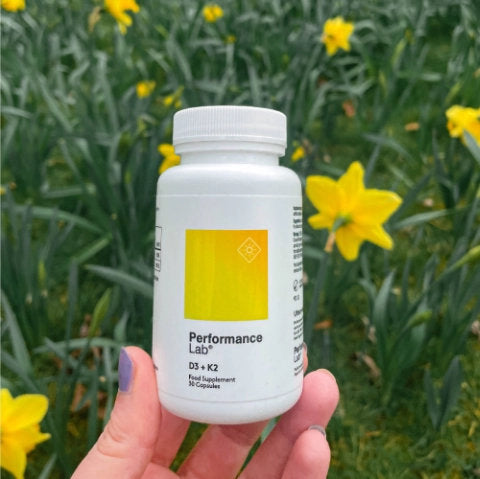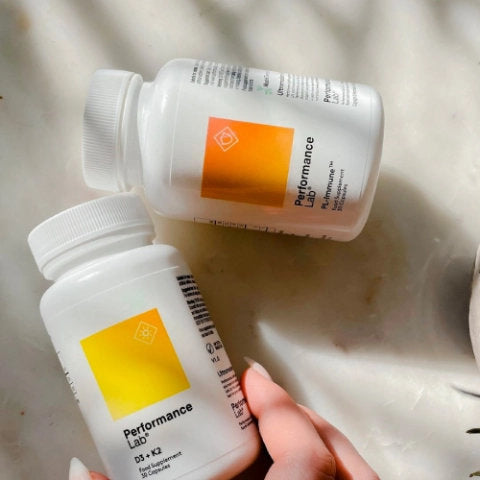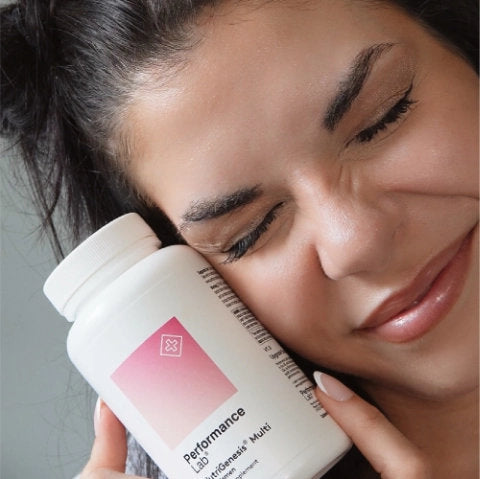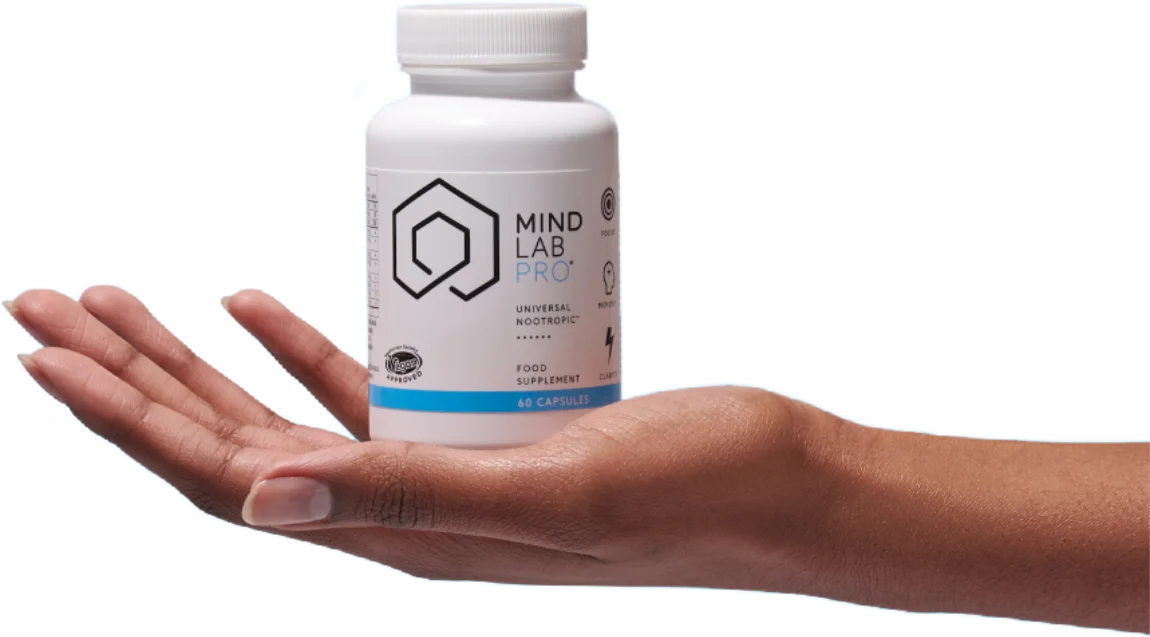It's Sunday night. You know what you want—a film.
So you open Netflix. You scroll. What's trending? What's new? What's recommended for you?
Thirty minutes later, you're still scrolling—and now it’s probably too late to start anything anyway.
That’s what choosing a magnesium supplement can feel like.
You sort of know what you're looking for. But you don't want to start something that may not be that good.
And with so many different magnesium supplements to choose from, it’s easy to get stuck in decision limbo.
After all, the real difference isn’t just magnesium. It’s what it’s bound to.
There are many studies on magnesium's core benefits. But where it gets really interesting, is the 'chelate' partner compound.
This is what gives each form its edge.
And although we're still somewhat limited when it comes to full-scale human studies comparing each specific form of magnesium. We do have growing evidence around the other part of the compound—the chelate partner—like glycine or taurine.
Key Takeaways
- Magnesium glycinate pairs magnesium with glycine for a gentle, highly absorbable form that is popular for easing tension, anxiety, and sleep problems.
- Magnesium taurate combines magnesium with taurine, adding extra support for heart rhythm, blood pressure, and a steady nervous system without heavy sedation.
- Both chelated forms tend to be better tolerated and more effective than many cheaper magnesium salts, and you can choose based on whether your main issues are mental stress, cardiovascular strain, or a mix of both.
- Performance Lab® Sleep uses a matrix of glycinate, taurate, and food based magnesium to cover calm, cardiovascular ease, and long term replenishment in one non habit forming formula.
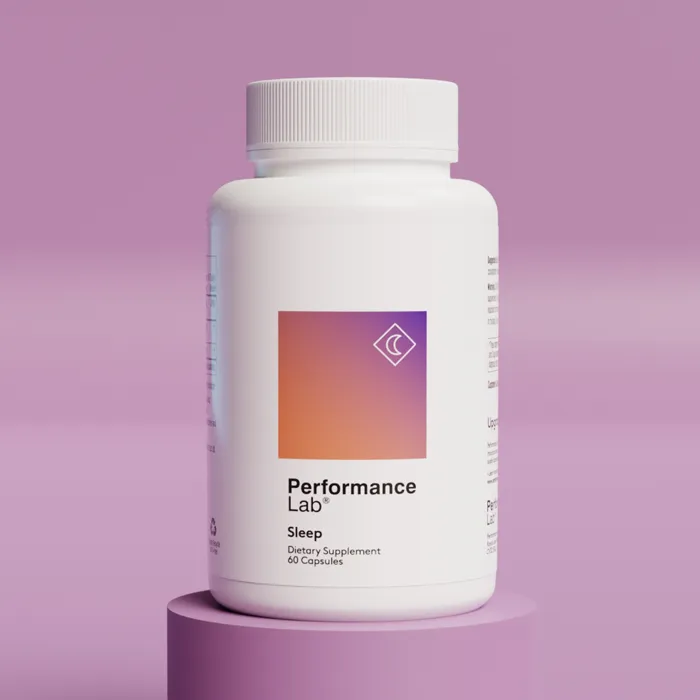
Magnesium Benefits

Magnesium is a true multitasker. No matter what form it comes in, magnesium itself is doing a lot of the heavy lifting.
It's an essential mineral involved in over 300 different processes in our body. And when our magnesium levels are where they should be—a lot of things just work better.
Here’s what magnesium helps with, across the board:
- Nerve and muscle function – It helps your muscles contract and relax properly, and keeps your nervous system steady—not jittery.(1)
- Blood pressure – It naturally helps blood vessels relax, which can support healthier numbers over time.(2)
- Energy production – Your body needs magnesium to convert food into usable energy (ATP). No magnesium, no fuel.(3)
- Mood and sleep – It plays a role in the modulation of serotonin, GABA, and melatonin—your brain’s built-in toolkit for feeling calm and falling asleep.(4)
- Bone strength – About 60% of the magnesium in your body is stored in your bones, helping to keep them strong and dense.(5)
Not getting enough magnesium (which is surprisingly common) can leave you feeling drained, tight, restless, foggy, or just off. And sometimes, it's not about what you’re doing wrong, it’s stress, digestion, or just not absorbing enough through food alone.
So while the form of magnesium you choose does matter, the first step is making sure your magnesium intake, is on point.
How to Get Enough Magnesium

Bigger picture question, and the one to ask before delving into types of magnesium:
Are you even getting enough to begin with?
A true magnesium deficiency is not something most of us need to be concerning ourselves with. True hypomagnesaemia is a severe form of magnesium deficiency that requires medical intervention. This type of deficiency is thought to affect 2.5-15% of the population.
It's worth noting, that you don’t have to be fully deficient to feel the effects of suboptimal magnesium levels though.
And this is where we start to hear figures like "48% of Americans" consume less than the recommended amounts of magnesium.(3)
Stress, poor sleep and gut health issues can all affect absorption. And even if you think you're eating well, the magnesium content in our food has taken a nose dive over the years due to overfarming and soil depletion.
How much magnesium do we need?
The Recommended Dietary Allowance (RDA) for magnesium varies slightly by age and sex, but for most adults it’s around:
- 400–420 mg/day for men
- 310–320 mg/day for women
These amounts reflect what's needed to support baseline health, not necessarily optimal levels for stress, sleep, or athletic recovery.
So what can you do?
- Start with food. Leafy greens, legumes, seeds, nuts, and whole grains are some of the best natural sources. Think spinach, pumpkin seeds, black beans, and quinoa.
- But don’t stop there. If your magnesium levels are low—or you’re experiencing signs like muscle cramps, low mood, poor sleep, or brain fog—magnesium supplementation may be an efficient way to raise them.
The catch? Not all supplements are created equal.
That’s because magnesium never comes on its own. It has to be bound to another compound—often an amino acid or an organic acid—to help your body absorb it. Together, they form what’s called a magnesium salt.
Some magnesium salts are poorly absorbed, meaning you’re not getting the full benefit.
Others may cause digestive upset. And that’s where the form—and its chelate partner—starts to matter.
Because while magnesium does the heavy lifting, the compound it's bound to plays a key role in how well it’s absorbed, and how efficiently it performs when treating low magnesium levels.
So let’s break it down.
Why the Form of Magnesium Matters

Magnesium Isn’t Alone: Chelated Compounds Explained
On its own, magnesium is a reactive mineral, it needs to be attached to something else to be stable and absorbable. That “something else” is usually an amino acid or an organic acid, and the combination is called a chelate.
Think of it like a delivery buddy.
The magnesium molecule gets bound to a partner compound that helps it travel through your digestive system and get where it needs to go. Without that partner, your body might struggle to absorb it, or worse, it might rush through and leave you with nothing but an upset stomach.
This is why some forms of magnesium are better absorbed than others. It’s also why the form you choose can affect how it works, how it feels, and how well your body puts it to use.
The Partner Makes a Difference: Amino Acids
Here’s where it gets really interesting. That chelate partner? It can bring its own benefits to the table.
Take magnesium glycinate, for example. Its partner is glycine, an amino acid that also acts as a calming neurotransmitter.(6) So in addition to delivering magnesium efficiently, glycine may help support relaxation, reduce anxiety, and encourage better sleep.
Then there’s magnesium taurate. This one’s paired with taurine, an amino acid that plays a big role in cardiovascular function and calcium signaling.(7) Taurine’s known for supporting healthy blood pressure, heart rhythm, and a steady nervous system.
In both cases, the chelate partner isn’t just a vehicle—it’s a co-pilot. And this is where different forms of magnesium start to have different flavors of benefit.
In the next section, we’ll show you how these differences play out—especially when it comes to rest, recovery, and sleep.
Magnesium Glycinate: What We Know
If magnesium had a comfort-first formula, this would be it.
Magnesium glycinate—also known as magnesium bisglycinate—is magnesium bound to two molecules of glycine, a calming amino acid that doubles as a neurotransmitter.
The result? A form of magnesium that’s known for being gentle, well-absorbed, and effective for relaxation.
What the research (and experience) tells us:
- Glycine is a co-agonist of GABA(8)—a neurotransmitter that helps calm the brain and body.That makes magnesium glycinate especially popular for reducing anxiety, promoting emotional balance, and supporting better sleep quality.
- It’s also easy on the stomach, with fewer laxative effects compared to forms like magnesium citrate or magnesium oxide. This form is ideal for daily use.
- Its high bioavailability means your body can absorb and use more of the magnesium you take.
What it’s typically used for:
- Easing physical tension and muscle cramps
- Calming the nervous system
- Supporting sleep, especially when stress is the culprit
- Gentle magnesium replenishment for people with sensitive digestion
In short: If your main goal is calm, body, mind, and nervous system. Magnesium glycinate is the form you're looking for.
Magnesium Taurate: What We Know
If magnesium glycinate is all about calm, magnesium taurate is calm with a cardiovascular edge.
This form combines magnesium with taurine, an amino acid that supports heart rhythm, calcium signaling, and nervous system stability. While taurine isn’t directly sedating, it helps promote balance—physiologically and mentally.
The result? A magnesium supplement that’s especially useful for those whose stress shows up in their cardiovascular system: racing heart, tension spikes, or elevated blood pressure.
What the research suggests:
- Taurine has been shown to help regulate blood pressure, reduce oxidative stress, and support healthy endothelial function—the inner lining of your blood vessels.
- In animal models, magnesium taurate helped lower blood pressure and protect heart tissue in cases of chemically induced hypertension.(9)
- There’s also growing interest in taurine’s ability to promote calm focus—helping support mental clarity without causing drowsiness.
What it’s typically used for:
- Supporting heart rhythm and cardiovascular health
- Balancing overstimulation (without drowsiness)
- Helping manage stress-related blood pressure spikes
- Gently calming the nervous system
In short: If your stress manifests physically, racing heart, muscle tightness, or reactive nerves. Magnesium taurate offers steady support without slowing you down.
Magnesium Taurate Vs Glycinate: Quick Comparison
Both forms are well absorbed and offer a gentle, effective way to raise magnesium levels. Each form will also bring its own unique benefits.

Which is The Best Magnesium Supplement For You
If your stress tends to hit your mind—restlessness, poor sleep, anxiety. Magnesium glycinate may be the better fit.
If it shows up more in your body—heart thumps, tension spikes, or stress-induced blood pressure swings. Magnesium taurate might be more up your street.
Some people even rotate the two depending on what their day, or week, throws at them.
And when it comes to sleep?
Glycinate helps calm the mind. Taurate helps calm the body.
Together, they support the full wind-down process. Helping you relax both mentally and physically so you can fall asleep more easily and sleep more deeply.
That’s why you’ll find both forms in Performance Lab® Sleep. Alongside a third, food-based form of magnesium for optimal absorption and all-round support.
Performance Lab® Sleep: Triple-Source Magnesium for Better Sleep

Performance Lab® Sleep combines this advanced magnesium matrix with other research-backed ingredients. L-Tryptophan, Montmorency Tart Cherry, and Lemon Balm support every stage of sleep. From winding down to staying asleep and waking up clear-headed.
It’s a gentle, non-habit-forming way to support your body’s natural sleep cycles. No grogginess, no synthetic melatonin.
Each serving includes:
- Magnesium Bisglycinate – chelated with glycine, a calming amino acid and GABA co-agonist, to support deeper relaxation and gentle absorption
- Magnesium Taurate – bound with taurine, which helps promote GABA activity and balance overactive nerves without sedation
- NutriGenesis® Magnesium – a clean, food-cultured form, complete with natural cofactors to enhance bioavailability and long-term replenishment
Together, this magnesium matrix works to:
- Calm excitable nerve impulses so your body can downshift
- Relax muscles and blood vessels, helping support the natural dip in blood pressure that cues sleep onset
- Reduce nighttime restlessness, like twitching or limb movement
- Support melatonin and GABA production, without synthetic sedatives
In short: If your sleep issues are tied to stress, whether it’s mental, physical, or both, this formula helps target the root causes while supporting magnesium levels more effectively than standard supplements.
An immediate change in quality and consistency of sleep. I highly recommend it.Stephanie B

Final Thoughts
When it comes to magnesium, it’s not just about getting more, it’s about getting the right form for your body, your stress patterns, and your goals.
Magnesium glycinate and magnesium taurate both offer high bioavailability and gentle support, but they differ in the kind of calm they bring—mental vs. physical, emotional vs. cardiovascular.
And when used together, they don’t compete. They complement.
Whether you’re looking to ease tension, balance your nervous system, or finally get the kind of deep, uninterrupted sleep your body’s been asking for, understanding the why behind the form makes all the difference.
And if you're looking for a formula that brings the best of both worlds together, Performance Lab® Sleep is a smart place to start.
References
- Zhang J, Zhang B, Zhang J, Lin W, Zhang S. Magnesium Promotes the Regeneration of the Peripheral Nerve. Front Cell Dev Biol. 2021 Aug 11;9:717854. doi: 10.3389/fcell.2021.717854. PMID: 34458271; PMCID: PMC8385315.
- Houston M. The role of magnesium in hypertension and cardiovascular disease. J Clin Hypertens (Greenwich). 2011 Nov;13(11):843-7. doi: 10.1111/j.1751-7176.2011.00538.x. Epub 2011 Sep 26. PMID: 22051430; PMCID: PMC8108907.
- https://ods.od.nih.gov/factsheets/Magnesium-HealthProfessional
- Abbasi B, Kimiagar M, Sadeghniiat K, Shirazi MM, Hedayati M, Rashidkhani B. The effect of magnesium supplementation on primary insomnia in elderly: A double-blind placebo-controlled clinical trial. J Res Med Sci. 2012 Dec;17(12):1161-9. PMID: 23853635; PMCID: PMC3703169.
- Rondanelli M, Faliva MA, Tartara A, Gasparri C, Perna S, Infantino V, Riva A, Petrangolini G, Peroni G. An update on magnesium and bone health. Biometals. 2021 Aug;34(4):715-736. doi: 10.1007/s10534-021-00305-0. Epub 2021 May 6. PMID: 33959846; PMCID: PMC8313472.
- Razak MA, Begum PS, Viswanath B, Rajagopal S. Multifarious Beneficial Effect of Nonessential Amino Acid, Glycine: A Review. Oxid Med Cell Longev. 2017;2017:1716701. doi: 10.1155/2017/1716701. Epub 2017 Mar 1. Erratum in: Oxid Med Cell Longev. 2022 Feb 23;2022:9857645. doi: 10.1155/2022/9857645. PMID: 28337245; PMCID: PMC5350494.
- Santulli G, Kansakar U, Varzideh F, Mone P, Jankauskas SS, Lombardi A. Functional Role of Taurine in Aging and Cardiovascular Health: An Updated Overview. Nutrients. 2023 Sep 30;15(19):4236. doi: 10.3390/nu15194236. PMID: 37836520; PMCID: PMC10574552.
- Bowery NG, Smart TG. GABA and glycine as neurotransmitters: a brief history. Br J Pharmacol. 2006 Jan;147 Suppl 1(Suppl 1):S109-19. doi: 10.1038/sj.bjp.0706443. PMID: 16402094; PMCID: PMC1760744.
- Shrivastava P, Choudhary R, Nirmalkar U, Singh A, Shree J, Vishwakarma PK, Bodakhe SH. Magnesium taurate attenuates progression of hypertension and cardiotoxicity against cadmium chloride-induced hypertensive albino rats. J Tradit Complement Med. 2018 Jun 2;9(2):119-123. doi: 10.1016/j.jtcme.2017.06.010. PMID: 30963046; PMCID: PMC6435948.







